Essential Guide: Frequency of Changing Hot Tub Water for Owners
September 28th, 2024
September 28th, 2024
Stepping into the soothing embrace of a hot tub after a long day is pure bliss. The gentle bubbling and warm water work together to melt away stress, offering a personal sanctuary of relaxation. However, behind those serene waters lies a question that every hot tub owner encounters: how often should the water be changed?
A hot tub isn't just a one-time investment; it requires ongoing care and attention to maintain its allure and functionality. When I first became a hot tub owner, I was clueless about the intricacies of hot tub maintenance. I learned quickly that it’s not just about balancing chemicals; the frequency with which you refresh the water plays a significant role in the overall experience. Hot tubs, by their nature, collect everything from body oils to environmental debris, which can affect water quality over time.
Changing the water isn't merely a chore but a vital practice to ensure a clean and safe environment. Various factors influence this schedule, including usage frequency, water quality, and the number of users. A friend of mine, who regularly hosts hot tub parties, needs to change her water more often than I do with my occasional evening dips. Understanding these dynamics can help you establish a routine suited to your lifestyle. This guide will explore the nuances of maintaining fresh, inviting waters that enhance every soak.
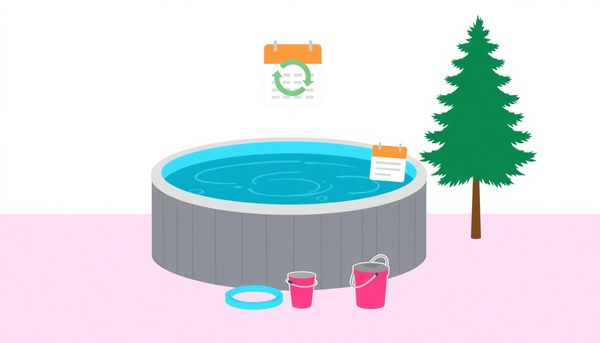
When it comes to keeping your hot tub inviting and safe, maintaining healthy water quality is key. It’s more than just adding chlorine and hoping for the best. Regular monitoring and maintenance protect both your tub and your well-being. Begin by creating a consistent water care routine. Test the water weekly for pH, alkalinity, and sanitizer levels. This not only ensures balanced water chemistry but also prevents the buildup of harmful bacteria that thrive in poorly maintained hot tubs.
Consider a time when you may have jumped into a hot tub only to find your eyes stinging or your skin itching afterward. These are telltale signs of unbalanced water. Avoid these discomforts by using the right mix of chemicals. Invest in quality test strips or a digital tester to make this process straightforward. You’ll thank yourself the next time you settle into a perfectly balanced tub.
Furthermore, staying proactive is crucial. If your water starts to turn cloudy, it could signal that your sanitizer levels are off, or that the filter needs cleaning. Take action immediately by adjusting chemical levels or rinsing the filter to clear up the water. Relating a personal story, once I ignored a slightly murky appearance, thinking it was harmless. It wasn’t long before I had to deal with the dreaded foam and a complete water change.
Keeping your hot tub's water clean isn’t just about convenience; it's about extending the life of your equipment and ensuring every soak is a pleasant, stress-free experience.
In the world of hot tub maintenance, the rhythm of water change is an essential yet often overlooked dance. It's easy to imagine that a sprinkle of chlorine will suffice, leaving you to bask in eternal relaxation. However, neglecting to refresh your tub's water can quickly transform your spa into a murky quagmire rather than a soothing oasis.
Why is regular water change so crucial? Over time, the water accumulates a cocktail of beauty products, oils, and the natural shedding from our skin. Even with diligent sanitation, these impurities, known as total dissolved solids (TDS), build up. This not only makes the water less pleasant but can also hinder the effectiveness of your sanitizers. I remember stepping into a friend's hot tub that hadn't been drained in ages; the water was hardly inviting, stained with a slight gray hue and smelling faintly of chemicals. It was a stark reminder of the importance of this routine.
Each hot tub, from the cozy two-seaters to the grand eight-seaters, comes with its own schedule. Understanding your tub's volume and usage patterns is key. For instance, if you frequently entertain guests, consider more frequent changes. A basic formula can guide you: divide the tub's gallon capacity by three, then by how many people typically use it daily. Thus, a 330-gallon tub with three regular users should see fresh water roughly every 37 days.
Fresh water not only rejuvenates your spa but also elevates the entire soaking experience. By keeping to a regular schedule, you ensure a clean, inviting environment that’s as safe as it is serene. So, grab your calendar, mark that next water change, and enjoy the bliss of a well-maintained hot tub.
Hot tubs are a source of relaxation, but they can also become a breeding ground for unwanted issues if not properly managed. Picture a time when you’ve eagerly anticipated a soak, only to be greeted by murky water or an unpleasant odor. This is more than a minor inconvenience—it's a clear signal that your hot tub water needs attention. Frequent changes are essential, but so is addressing recurring water problems to ensure your tub remains a haven of tranquility.
Cloudy water, for instance, often results from an imbalance in water chemistry or a build-up of particulates. A simple spa shock might temporarily clear the cloudiness, but a complete water change ensures you tackle the root cause. Similarly, persistent foam on the water’s surface might seem trivial, but it’s often indicative of excess contaminants like lotions and oils. While a foam remover offers short-term relief, replacing the water is the only way to effectively eliminate the cause.
And let’s not dismiss the stench that sometimes wafts up from neglected hot tub water. A foul odor is typically a sign of bacteria or mildew thriving in your spa. No amount of chlorine can combat this problem head-on; only fresh water can reset your spa’s ecosystem. By staying vigilant with these common water issues and committing to regular maintenance, your hot tub remains an oasis rather than a burden.
Determining the right frequency for changing your hot tub water can seem daunting, but with a little math, it becomes a breeze. You might think that dumping a heap of chlorine would suffice for maintenance. However, to truly enjoy a clean soak, understanding when to refresh the water is essential. It might not demand calculus, but a simple formula can guide you to pristine, inviting waters.
Start by learning your hot tub’s total volume. Owners' manuals or manufacturers can provide these specifics. Larger tubs naturally demand less frequent changes, owing to their ability to dilute contaminants more effectively. For instance, a cozy two-seater might hold around 170 gallons, whereas a party-ready, seven-seater could hold as much as 610 gallons. Once your tub’s capacity is clear, it’s time to factor in usage.
Consider how many people typically use your spa and how often. This is known as the bather load. A straightforward formula helps: divide your hot tub’s volume by three, then divide that number by the average bather load. This gives a reliable estimate for water change frequency. For example, with two people regularly using a 475-gallon tub, you should change the water approximately every 79 days.
Of course, this is just a guideline. Environmental factors like water quality and indoor or outdoor placement also influence the schedule. Keep an eye on water clarity and smell, as these can signal the need for an earlier change. By routinely assessing these elements, you ensure your hot tub remains a sanctuary of relaxation, not a swamp of uncertainty.
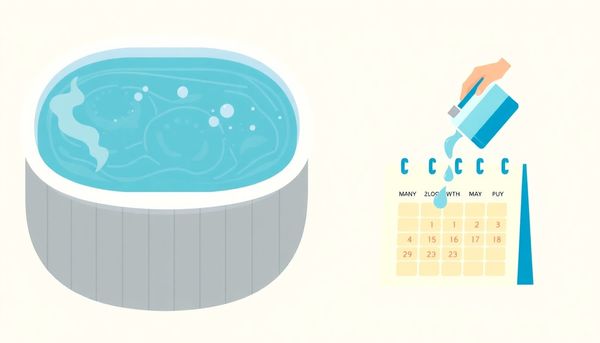
Scaling is the unwanted guest that can turn your serene hot tub experience into a maintenance nightmare. Picture this: a hard, chalky crust forming on your spa’s surfaces, clogging up filters, and quietly sabotaging your investment. To fend off this insidious issue, a proactive approach is essential.
First and foremost, maintaining balanced water chemistry is your best defense. Regularly test your water for calcium hardness, pH, and alkalinity levels. A high calcium concentration can lead to scaling, so keep it within the recommended range. If the levels start to creep up, a water softener or sequestrant can work wonders by preventing calcium from solidifying on your spa surfaces.
Temperature also plays a role. Hotter water accelerates scaling, so monitor your spa’s temperature settings. While a toasty soak is tempting, excessively high temperatures can speed up mineral deposits. Keeping your hot tub covered when not in use can also help, as it minimizes evaporation, which can concentrate minerals further.
Another preventive measure is to perform regular water changes, as recommended. Fresh water helps to dilute minerals naturally present in your spa, reducing their potential for buildup. And if you're in a region notorious for hard water, consider using a pre-filter on your garden hose when filling the spa.
Finally, remember that a clean filter is a happy filter. Regularly rinsing and replacing your hot tub's filters ensures that mineral deposits don’t have a chance to settle, keeping your spa smooth and scale-free. With a little attention and care, you can enjoy a scale-free soak every time.
Unveiling your hot tub cover only to be greeted by murky water can be a surprise you'd rather avoid. At first glance, maintaining a hot tub might seem as simple as tossing in a few chlorine tablets, but it's crucial to understand why regular water changes are non-negotiable. Regularly replacing the water doesn’t just ensure a pleasant soaking experience; it significantly impacts the longevity and functionality of your spa equipment.
Every time you enjoy the warm embrace of your hot tub, you're introducing more than just yourself to the water. Perfume residues, body oils, and even the remnants of that fancy shampoo can all contribute to an accumulation of total dissolved solids. Over time, these impurities interfere with the water’s chemistry, making it challenging for sanitizers to do their job effectively. A high level of these solids can lead to murky, unpleasant water, and if left unchecked, it can damage your hot tub’s internal systems.
Surprisingly, the act of refreshing the hot tub water isn’t just about cleanliness. It’s also about rediscovering the joy of a pristine soak, where the only bubbles are the ones created by the jets. Think of it as hitting a reset button for your spa. Whether you own a compact two-seater or a sprawling eight-person tub, treating your hot tub water to a regular change is an investment in both your health and the equipment’s durability. Your future self, sinking into crystal-clear waters, will thank you for it.
When considering the health of your hot tub, one crucial aspect is keeping a vigilant eye on water quality. Rather than merely a chore, it’s akin to checking in on a good friend. Water quality directly influences both the longevity of your hot tub and the quality of your soaking experience. A few simple tests can prevent potential headaches down the road.
Start by regularly checking the pH and alkalinity levels. These two factors are the backbone of water chemistry. An imbalance can lead to skin irritation and can damage your spa's components. Think of them as the guardians of comfort and equipment longevity. Aim to conduct these tests at least once a week.
Next, consider the sanitizer levels. Chlorine or bromine should not be forgotten. Without these, you leave your tub open to unwanted guests like bacteria and algae. Nobody wants a murky soak. Use test strips or a digital tester, which offer quick and reliable results.
Remember, even with the right chemical balance, water can accumulate Total Dissolved Solids (TDS) over time. If your water feels off—gritty or sticky—it might be time to change it, regardless of the calendar.
Lastly, trust your senses. If the water emits an unusual odor, or if the clarity has shifted, these are red flags urging you to take action. Monitoring water quality isn't just maintenance; it's the key to enjoying a safe and inviting hot tub experience.
Foam and unpleasant odors in your hot tub are not merely nuisances; they are clear indicators of underlying issues that need prompt attention. Believe it or not, foam can pop up due to something as simple as leftover soap from your swimsuit. Over time, body oils, lotions, and other personal care products also contribute to this bubbly dilemma. A quick fix might involve using a foam remover, but beware—it's a temporary solution that skirts around the root cause. The real fix? Changing the water is your go-to strategy to tackle this frothy fiasco effectively and restore clarity.
On the other hand, a foul smell emanating from your hot tub is a more pressing concern. Ideally, hot tub water should be odorless. A stench could signal anything from bacteria growth to mildew or even a biofilm lurking within the plumbing. If your water's aroma turns sour or musty, it's high time to swap it out. No amount of chlorine can mask or eliminate these odors if the root cause isn't addressed. Remember, a lingering smell indicates that something is off, possibly compromising your hot tub's hygiene.
By routinely changing your hot tub’s water, you not only eliminate foam and odors but also prevent potential health risks. This small habit ensures your spa remains a sanctuary of relaxation, free from unwelcome surprises.
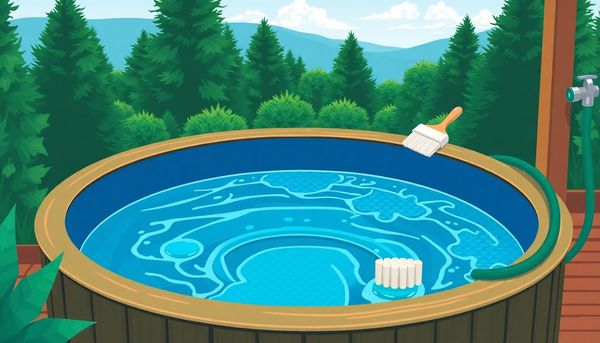
Unpleasant odors wafting from your hot tub can be a real mood killer. Anyone who's ever had a whiff of stale, musty water knows that a smelly hot tub isn't just unpleasant—it's a sign that something's gone awry. Why endure the funk when there's a simple solution? Regularly changing the water is key to maintaining a fresh and inviting spa experience.
This isn't just about avoiding a nose wrinkle every time you lift the cover. A foul odor often indicates an underlying issue, such as bacteria or biofilm in the plumbing. These invisible invaders thrive in neglected water, and no amount of sanitizer can truly eradicate them once they've settled in. It's like using air freshener instead of taking out the trash—temporary and ineffective.
Beyond basic hygiene, there's a comfort element too. Nobody wants to soak in water that smells like it's been marinating gym socks. The good news is that staying proactive with water changes helps keep these stink sources at bay. Think of it like giving your hot tub a breath of fresh air—a reset that ensures every dip is as enjoyable as the first.
So, don't let unpleasant odors dampen your relaxation. Mark your calendar, stick to a water change schedule, and you'll not only protect your investment but also guarantee that each soak is a blissful escape from the everyday grind.
Changing the water in your hot tub might seem like a chore, but it’s a crucial part of maintaining both the tub’s longevity and your own health. Water doesn’t just magically stay clean. Over time, it becomes a cocktail of personal care products, skin oils, and a diverse collection of microorganisms. The idea of soaking in this mix for months on end? Not very appealing.
Regular water changes are akin to hitting the reset button on your hot tub. Every three months—or sooner, depending on usage and conditions—you should drain and refill your tub to prevent the buildup of Total Dissolved Solids (TDS). This isn’t just about aesthetics; it’s about ensuring that your chemical sanitizers work effectively. High TDS can hinder these chemicals, leaving your water less protected against bacteria and algae.
Consider your hot tub as part of the family. Just as you wouldn’t let your car run on the same oil indefinitely, your hot tub needs fresh water to perform at its best. Not to mention, the joy of sinking into clean, clear water is an experience in itself. Keeping to a regular schedule, perhaps marking it on your calendar or setting a reminder, ensures you’re always ready for a rejuvenating soak.
So, commit to regular water changes and enjoy peace of mind, knowing your hot tub is always in top-notch condition.
When the gentle aroma of clean water becomes a distant memory and your hot tub starts emitting an uninviting stench, it's a clear call to action. This unpleasant odor often signals that it’s time to swap out the water entirely. Hot tub water, ideally, should be odorless; any deviation usually indicates an underlying issue, such as lurking bacteria, mildew, or biofilm build-up in the plumbing. These culprits can persist, even with the addition of sanitizers or spa shock treatments, making a water change the only effective solution.
Reflecting on a personal experience, I once ignored a faint musty smell in my hot tub, believing it to be a minor issue. However, the odor only intensified, eventually resembling something between a damp basement and a forgotten gym bag. In hindsight, I realized that timely water changes could have saved me from the onerous task of deep cleaning the entire system to eliminate the stubborn biofilm. Frequent water changes prevent such aromatic challenges, ensuring that every soak is revitalizing rather than revolting.
Moreover, a routine water change not only tackles unpleasant smells but also preserves the integrity of your hot tub's components. Regularly replacing the water helps prevent the build-up of contaminants, safeguarding the overall health of your spa. So, before your hot tub turns into a source of olfactory offense, remember the importance of fresh water. Your nose—and well-being—will thank you.
Foam in your hot tub might seem playful, but it’s often a sign of unwanted party crashers—residues from soaps, lotions, and sometimes even poor water balance. Keeping foam at bay not only ensures a more pleasant soaking experience but also prolongs the life of your hot tub. Consider this: you've just spent a long day at work, and the prospect of relaxing in a hot tub sounds perfect. But as you lift the cover, you're greeted by a frothy spectacle. Not exactly the luxurious retreat you envisioned.
To tackle foam buildup, begin by reviewing what’s causing it. Start with your own habits. Are you rinsing off thoroughly before stepping into the tub? Everyday products like shampoo and body lotion can linger on your skin and disrupt water chemistry. Encourage everyone using the tub to make rinsing a pre-soak ritual.
Additionally, maintaining chemical balance is crucial. Keep a close eye on pH and alkalinity levels, ensuring your sanitizer is doing its job without interference from excess residues. Sometimes, despite your best efforts, foam might still arise due to persistent residues or water nearing the end of its cycle. In these cases, using a foam reducer can provide temporary relief, but it’s not a substitute for regular water changes.
Ultimately, preventing foam is about proactive care. By addressing potential causes and maintaining a vigilant water care routine, you’ll keep your hot tub inviting and ready for relaxation without unwelcome surprises.
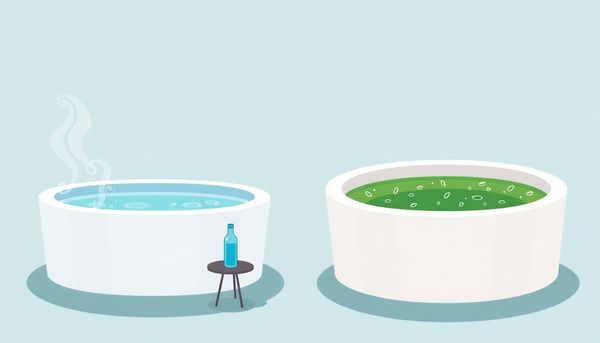
A hot tub, pristine and inviting, can swiftly turn into a bubbling cauldron of frustration when foam starts to appear. That frothy surface isn’t just an aesthetic issue; it’s a signal that something’s amiss. Foam often arises from the buildup of lotions, oils, and detergents that cling to your skin or swimwear. While a quick fix like a foam remover might seem tempting, it's merely a temporary band-aid. The real solution? A thorough water change.
Years ago, I learned this lesson firsthand. After finding my hot tub resembling a bubble bath, I tried every trick in the book to no avail. It wasn't until I drained and refilled the tub that the issue truly disappeared. The root cause was a mix of high total dissolved solids (TDS) and lingering contaminants from daily use.
To tackle foam effectively, first commit to regular water changes—at least every three months. This practice not only combats foam but also ensures that your hot tub remains a haven of cleanliness and relaxation. Additionally, keep an eye on your TDS levels using a meter and consider rinsing off before entering the tub to minimize the introduction of foreign substances. By staying proactive, you’ll maintain the tub’s allure and keep those pesky bubbles at bay.
Cloudy water in your hot tub can be a real mood dampener, much like discovering a foggy windshield as you head out for a scenic drive. The culprits? Often, it's a buildup of contaminants like body oils, lotions, and even the residue from swimwear detergents. Though tempting to toss in extra chlorine to combat the haze, this approach is akin to using air freshener to mask a lingering odor—ineffective in the long run.
Regular water changes remain your best defense against cloudiness. Every three months is a solid rule of thumb, yet keeping an eye on water clarity between changes is crucial. My neighbor once shared a trick: he always kept a spare set of filters. Swapping them out when water seemed a bit off saved him from unnecessary drama. A proactive routine of rinsing or replacing filters can ward off murky water before it even starts.
Water chemistry also plays a pivotal role. pH levels should stay balanced to prevent mineral deposits and ensure sanitizers work effectively. Test strips are your hot tub's best friend; they provide a quick snapshot of your water's health and help you catch imbalances early. Armed with the right tools and a bit of diligence, you can transform your hot tub into an oasis of clear, inviting water—no more surprises, just relaxation.
Foam in a hot tub can be as unwelcome as an unexpected rain shower at a picnic. While the sight of frothy bubbles might seem playful, they often signal underlying issues that need addressing. A major culprit behind foam is the buildup of soap residues and body oils. If you've ever taken a dip right after applying sunscreen or forgotten to rinse off shampoo, you’ve contributed to this foamy phenomenon.
Last summer, a friend of mine experienced this first-hand. Eager for an evening soak, she found her tub resembling a bubble bath gone rogue. Despite using a foam remover, the effervescent nuisance kept returning. The temporary fix was just that—a stopgap. A wise old hot tub owner suggested a water change. Lo and behold, with fresh water and a little vigilance, the foam vanished.
To truly banish foam, cleaning filters regularly and rinsing thoroughly before plunging in helps maintain balance. Additionally, consider switching to low-foaming products designed for hot tub use. If you’ve done all this and the foam still mocks you, it’s time to drain and refill. Fresh water is the unsung hero of a clear, inviting tub. Regular water changes ensure you're not just swirling around in yesterday's bathwater, refreshing your soak with every cycle.
Ever been greeted by a pungent aroma when approaching your hot tub? It’s like an unwelcomed guest that insists on staying until you take decisive action. Foul odors from your hot tub are often a telltale sign that something's amiss, possibly even screaming for a complete water change. These unwelcome smells can result from bacteria, mildew, or biofilm that stealthily build up within the plumbing system. Chlorine or shock treatments may seem like a quick fix, but they only mask the odor temporarily, leaving the root cause unaddressed.
A personal experience might shed some light here. Once, after a particularly rainy week, I noticed my own hot tub had developed an unusual smell. Despite my best efforts with chemical treatments, the odor persisted, reminding me of a damp basement. It wasn’t until I drained and refilled the tub with fresh water that the smell was finally banished. This process not only cleared the air but also refreshed my tub, restoring it to its former inviting state.
Maintaining a regular water change schedule is crucial to preventing such unpleasant surprises. It’s a bit like resetting the clock, providing a clean slate for your next soak. Keep an eye—or rather, a nose—out for any unusual scents, and don’t hesitate to refresh your hot tub’s water. It’s a small task for the peace and pleasure it brings.
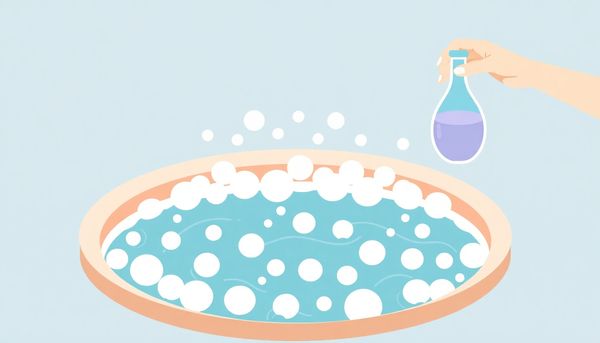
Balancing a hot tub’s health often hinges on understanding the mysterious bather load. It’s not just about how many friends decide to join your impromptu spa party; it’s about the impact each soak has on your hot tub’s ecosystem. Every time a person takes a dip, they bring along oils, lotions, and other residues that the water must accommodate. Over time, this accumulation can strain your hot tub’s filtration and sanitation systems, making regular water changes indispensable.
Earlier this summer, I hosted a weekend gathering that saw my hot tub play host to nearly a dozen friends over two days. By Sunday evening, the water had lost its sparkle, and an unmistakable film had formed on the surface. This was a stark reminder of how quickly bather load affects water quality.
Hot tub maintenance involves more than just adding a splash of chemicals. Monitoring bather load means understanding that frequent use means more frequent water changes. The equation for determining when to change your hot tub water is straightforward, but remembering that lifestyle and usage patterns play a crucial role is essential. Adjusting your maintenance schedule based on actual usage ensures that your hot tub remains inviting and hygienic, ready for those spontaneous soak sessions that we all love. Balancing this bather load is the key to keeping your hot tub a clean and relaxing haven.
Balancing leisure with logistics, the frequency of changing hot tub water often boils down to the number of friends, family, and surprise guests you host. The more the merrier, as long as you’re mindful of the water! Each bather introduces a cocktail of impurities, from body oils to sunscreen, which over time, challenge the clarity and cleanliness of your hot tub.
Consider a weekend party where the tub becomes the centerpiece; it’s not just the laughter and splashes you need to think about. The higher bather load speeds up the need to change water. A hot tub that sees only occasional use might stretch its water change to a full three months, but one enjoying weekly gatherings could require fresh water far sooner.
In my own experience, a monthly water swap became routine after a few backyard barbecues with friends. Their carefree dives into the tub were delightful, yet they underscored the importance of keeping track of usage. This routine helped maintain that inviting sparkle and ensured everyone enjoyed a safe soak. To gauge the right frequency for your own tub, think about how often it plays host. Adapt to these moments, and not only will your hot tub remain a pristine retreat, but so too will your peace of mind.
Navigating the waters of hot tub maintenance involves more than just a relaxing soak. It's a delicate balance of chemistry and care, and understanding your water replacement schedule is key to a pristine tub experience. The frequency with which you swap out that water doesn't rest on whim but on a specific formula tailored to your hot tub's use.
Consider the variables: the volume of your hot tub and the bather load. These are pivotal factors that shape your water change routine. For instance, a modest two-seater spa might hold 170 gallons, while larger models can surpass 600 gallons. Knowing your tub’s capacity is the first step.
Next, reflect on how many eager soakers dive into your tub regularly. This average bather load, combined with your tub’s volume, can guide you in calculating the perfect schedule. Here's a simple formula: take your hot tub’s volume, divide it by three, and then divide that result by the average number of bathers. This will yield the number of days you can wait before the next water change.
For example, if two people often share a 475-gallon tub, it translates to a refreshing water change approximately every 79 days. Of course, factors like water quality, location, and maintenance diligence can influence this timeline. By following these guidelines, you'll ensure your hot tub remains a sanctuary of relaxation, free from unexpected surprises.

This article provided insights into maintaining your pool. Start your pool care journey today!
Want to become a pool maintenance expert? Our free Pool School course covers everything you need to know about pool care. From basic maintenance to advanced troubleshooting, you'll learn how to:
Join over 10,000 pool owners who have already transformed their pool care routine. Get started with our free Pool School course today!